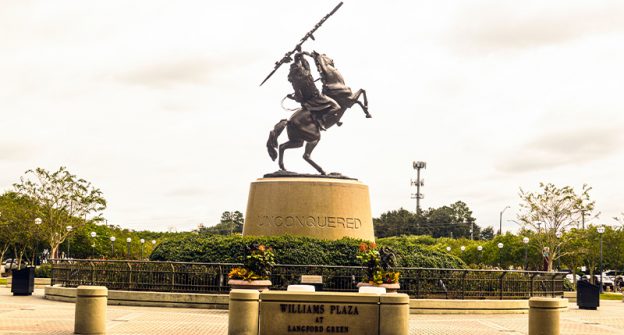
There’s more to Florida Than Disney World
Tell most people that you are taking a vacation in Florida, and they’ll probably assume you’re headed to Disney World, or maybe SeaWorld. Perhaps even Universal Studios or the Florida Keys.
But for history buffs, outdoor adventurers and tourists looking for a more personally enriching and cultural experience, Florida is also home to some of the best-preserved archaeological and Native American historical sites anywhere in the country.
This may come as a surprise, considering that Native Americans only make up less than half of one percent of Florida’s population. In fact, of the 574 federally recognized Tribal Nations as of 2020, Florida only has two of them: the Seminole Tribe of Florida and the Miccosukee Tribe of Indians of Florida.
However, that was not always the case. Florida was once home to hundreds of thousands of Native people, and dozens of tribes, prior to the arrival of Ponce de León over 500 years ago. Forced resettlement of those tribes in the nineteenth century, and the resulting Seminole Wars which were fought to resist those settlements, drove most of those tribes out of Florida forever, and led to the outright extinction of others.
Still, some Native people remained, retreating to Florida’s wetlands to avoid detection and re-establishing their reservations there, where many still live today.
Through incredible perseverance and determination, the culture, heritage and history of Florida’s First People are alive and well today, through dozens of museums and heritage sites across the state that are open to the public. Most importantly, Indigenous Florida culture thrives today through the living Native American elders, whose storytelling and teachings down through the generations have kept their heritage and traditions alive in the face of constant battles and threatened extinction. They also help fight misconceptions and negative stereotypes that continue to persist.
Today, these Native storytellers gladly teach their sacred traditions and culture to visitors who wish to learn, and share that knowledge with others.
Who were the First Floridians?
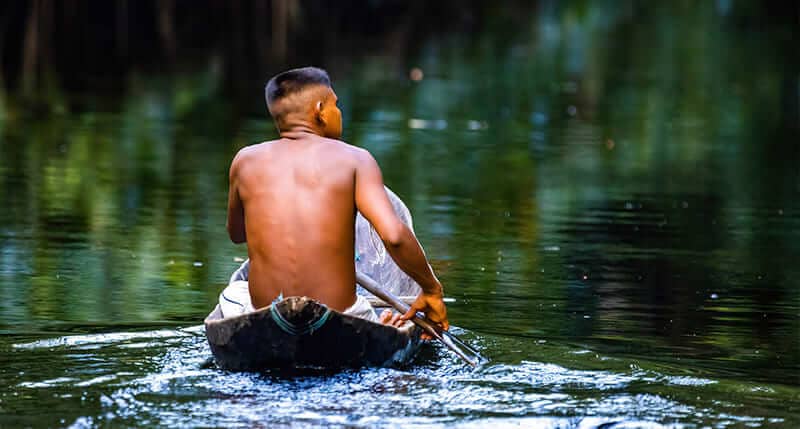
According to the Museum of Florida History, a project of the Florida Department of State, the first human civilizations in Florida date as far back as the end of the Ice Age 12,000 years ago.
As one would imagine, these First Tribes lived off the land, were skilled hunters and farmers, and lived in harmony with their surrounding environments.
The first known tribes were the Timucua, Calusa and Apalachee. Timucuans were composed of multiple tribes – each with their own land, system of governance and even different versions of their adopted language. They viewed themselves as a collective of multiple peoples, much like US states consider themselves mostly autonomous from the federal government. Still, they were considered an advanced tribe for their era.
The Calusa also adapted to the environment of their homeland, using the waterways as their primary source of survival – fishing and collecting shells to be used for shell mounds (more on this later). They were, unsurprisingly, often referred to as the “Shell Indians.”
Today, there are no known descendants of the Timucua and Calusa. Many tribal people died from smallpox and measles – diseases brought over from European settlers. Others were relocated to Cuba after Britain took over Florida from Spain in 1763, where it is believed they were systematically wiped out.
The Apalachee for their part were continuously hunted by Western settlers and eventually fled Florida for the French settlement of Mobile, which was located in present-day Alabama and Mississippi. When France lost the territory in the French and Indian War, they relocated again to what is now Louisiana.
According to recent news reports, only roughly 300 descendants of the Apalachee still exist today in Louisiana. Their original native language, called Apalachee, is now extinct. The only known living descendants of the first Floridians 12,000 years ago began the process of seeking federal recognition in 1997, under the name Talimali Band of Apalachee, but have since given up on those efforts.
The two federally recognized tribes that exist in Florida today – the Seminole Tribe and the Miccosukee Tribe of Indians – may not be directly descended from the First People of Florida, but they are critical to understanding Florida, and American, history nonetheless.
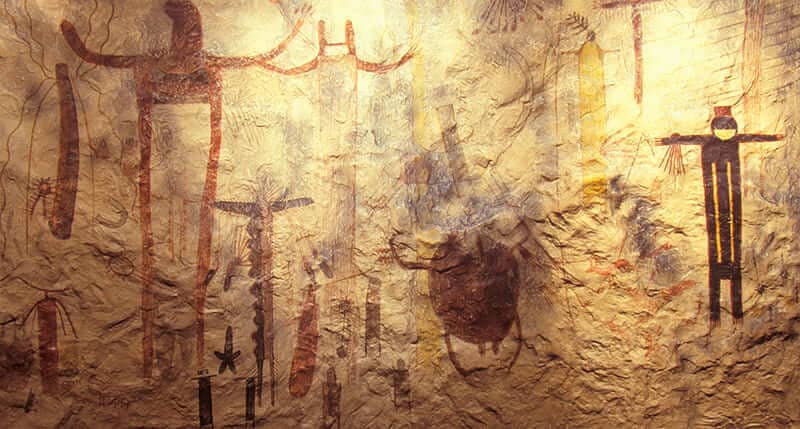
Originally migrating south from the Carolina area into Florida, these Native tribes had to continuously fight for their own survival. Like nearly all tribes, they were subjected to repeated attacks on their sovereignty and forced relocation in the nineteenth century. However, they did not go quietly.
US tensions with the Seminole tribe were already on edge, thanks to the Seminole practice of giving escaped slaves sanctuary within their reservations. But as more and more Northern settlers descended upon Florida, and a new policy of forcing many Seminoles to relocate to Indian Territory – AKA modern Oklahoma – along the infamous “Trail of Tears” took place, relations between the tribe and the US reached a breaking point.
On December 28, 1835, a column of 107 officers and men under the command of Major Francis Langhorne Dade was on a resupply mission en route from Fort Brooke to Fort King in present day Ocala. About 50 miles short of their destination, they were ambushed by 180 Seminole warriors, led by the chiefs Micanopy, Jumper and Alligator, in a forest in present day Bushnell.
Only three U.S. soldiers survived the battle, and only six Seminoles were killed, due to the Seminole strategy of guerrilla warfare from the shadows. Known at the time as the Dade Massacre, the slaughter sent shock waves across the nation. It marked the start of the Second Seminole War, the longest and most costly American Indian war in U.S. history.
The Second Seminole War was fought until 1842, costing the government at least $20 million and ending with the deaths of about 1,500 U.S. soldiers and countless civilians, according to the Florida Department of State.
After the war, a few hundred Seminole and Miccosukee remained, relocating to reservations near the Everglades where they continue to live today.
The best Native American sites to visit - even if they are little off the beaten path
So where can you visit to learn a little more about the First Floridians, Seminoles or Miccosukee, and have a good time doing it? Here’s a few suggestions.
Crystal River Archaeological State Park
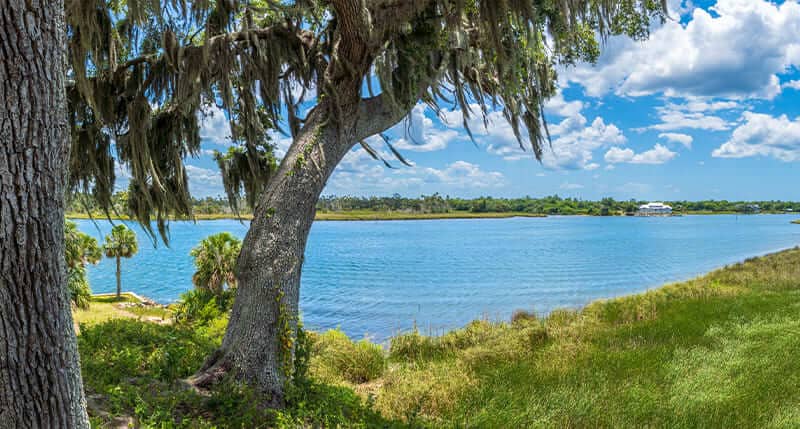
This National Historic Landmark is one of the longest continuously occupied sites in Florida, located on the edge of an expansive coastal marsh. Primarily an archaeological site, visitors can take a trip almost 3,000 years into the past to see how First Floridians lived in ancient civilization.
The park is a 61 acre, six mound complex that was a central ceremonial hub for an estimated 1,600 years. Researchers believe that up to 7,500 Native Americans traveled great distances to bury their dead and conduct trade on these mounds.
The visitor center and museum showcases ancient artifacts found at the site, as well as traditional pottery and jewelry.
Miccosukee Indian Village and Museum
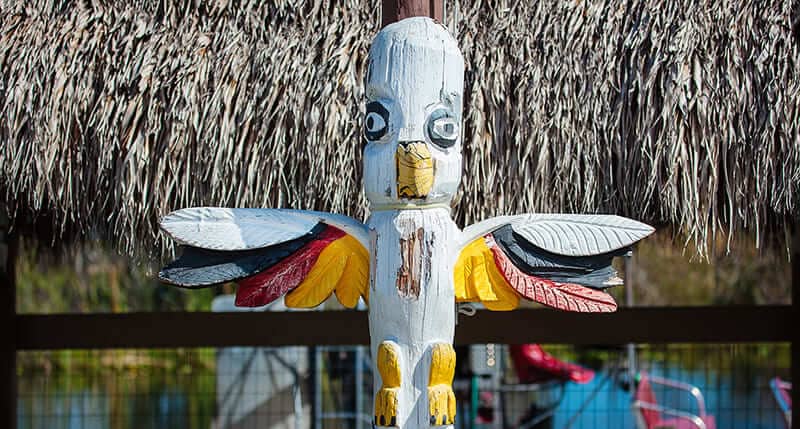
Located West of Miami in the heart of the Everglades you’ll find the Miccosukee Indian Village and Museum. Not only are there incredible artifacts, artwork and other treasures showcasing the Miccosukee way of life found in this museum, there are activities that you probably won’t find anywhere else.
There’s airboat tours of the camp, as well as working artists through the area who are happy to showcase their woodworking, painting, doll-making or other traditional skills.
But the highlight of this village is the alligator presentation. Here, a brave demonstrator explains centuries-old traditions and rituals that have been handed down by generations of Miccosukee with their bare hands (sometimes putting their head in a live alligator’s mouth).
The Miccosukee learned early on how to capture alligators for food and commodities like their tough skin. The times have changed and the Tribe’s relationship has moved towards conservation and education about the alligator’s role in Miccosukee culture.
Florida Caverns State Park
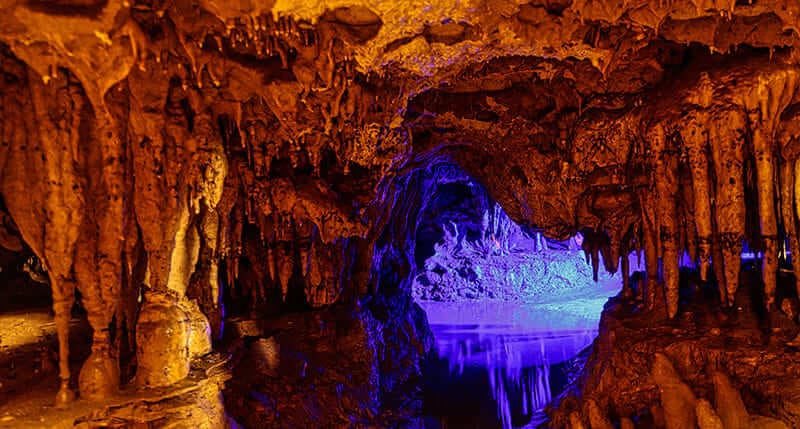
For the outdoor explorers who love natural history, Florida Caverns may be the place to see. It is the only Florida state park to offer cave tours to the public.
Explorers and archaeologists have discovered ancient artwork, tools and other artifacts in these caverns dating to the prehistoric era. In 1674, Spanish missionary Friar Barreda, allegedly delivered one of the first Catholic masses within these caverns. Evidence suggests Seminoles may have also taken refuge in the caverns to avoid involuntary displacement.
The cave has incredible formations of limestone stalactites, stalagmites, soda straws, flowstones, and draperies. As one can imagine, Florida Caverns is very popular for camping, swimming, fishing, picnicking, canoeing, and hiking. Stables are even available for equestrian campers
Guided cave tours are offered every day of the year except Thanksgiving and Christmas.
Mound Key State Archaeological Park
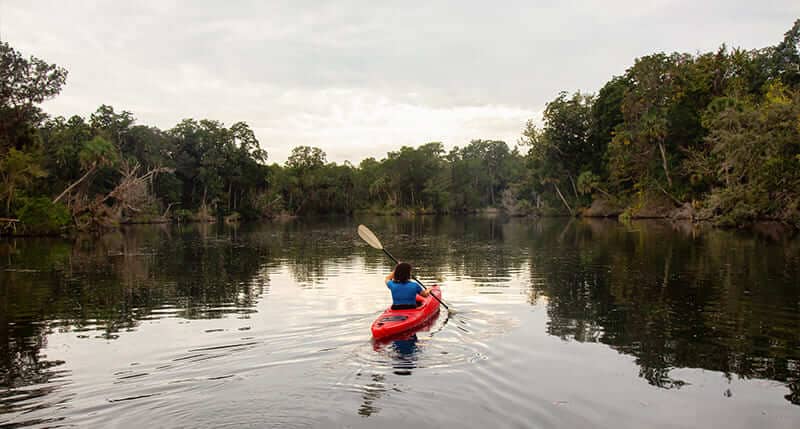
An extraordinary archaeological site that is only accessible by boat, Mound Key Archaeological State Park is a window into prehistoric Native America.
Located in Estero Bay, a small wild island off Fort Myers Beach, visitors typically launch from Koreshan State Park or Lovers Key State Park to boat or kayak to the park, formerly the capital and ceremonial epicenter of Calusa civilization for over 2,000 years. The Calusa were great sailors and fishermen, who understood the surrounding waterways better than anyone before or possibly since.
The Calusa Indians built this island up to its towering 30 foot height with seashells, fish bones and pottery. Visitors can hike all along the trail that circles the width of the island and learn about this former ceremonial center. However, outside of park rangers and volunteers, there is no one to really guide tourists or answer questions. Signage is also sparse along the trail. The park is mostly for those who love to get lost in history, visiting an ancient site lost to time.
For those who want to learn more about the Calusa, Mound House in Fort Myers Beach has an excellent small museum and helpful, knowledgeable staff.
Historic Spanish Point
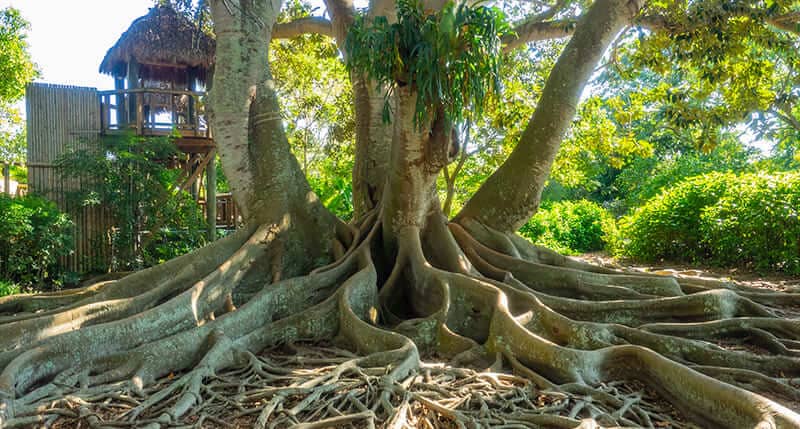
Historic Spanish Point may be the most archaeologically valuable piece of land in Sarasota County, containing one of the most fascinating historical exhibits on ancient Florida culture found anywhere in the state.
In ancient times, the Manasota lived, hunted and fished on what is modern day Sarasota for over 500 years. On these grounds existed piles and piles of discarded shells and other artifacts, slowly rising through the years. These mounds, also called middens, are essentially an archaeological treasure trove that showcases how the local native villages lived their lives.
Middens were not just garbage dumps, they also would be used as sacred burial sites and temple mounts. With no written language to archive their history, and the fact that the people – along with all their culture and heritage – no longer exist, these middens are the only archaeological record that exists of the ancient civilization. Without them, we may not even know they existed at all.
There are shell middens all over Florida, but this is the only one that was cut in half, enclosed in glass and put on public display. And that is located at Historic Spanish Point.
This “Window To The Past” is enclosed within the walls of a small museum where ancient history is exposed for all to see. Visitors peer through the glass casing and imagine what life was like thousands of years ago – staring directly at artifacts that haven’t been touched in hundreds, possibly thousands, of years. Amid the pile of shells, there are remnants of prehistoric pottery and tools the ancient tribal members used in their daily life.
Outside the museum, there are beautiful gardens, hiking paths and boardwalks that take you through pine flatwoods, tropical hardwood hammocks and live oak, mangrove swamps, tidal marshes and coastal beaches throughout the property. Visitors are free to walk these extraordinary paths with no guidance, so they may take their time and enjoy all the park has to offer, including soaking in the spiritual and natural aura of not only a beautiful park but the untouched remnants of an ancient people who have long since vanished.
Tours are highly recommended when enjoying Historic Spanish Point. The park offers a tram tour as well as an extended walking tour, which goes into deep detail of the park’s unique history. The park is also available for those simply looking to relax and picnic amidst the historic and ancient landmarks.
Big Cypress Reservation
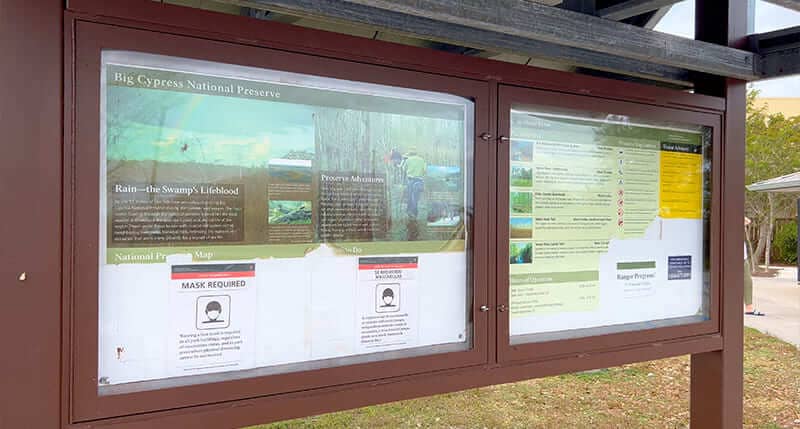
Nestled deep in the heart of the scenic Florida Everglades, 45 minutes south of Clewiston, you’ll find the Big Cypress Reservation, a 82-square-mile attraction that is the largest of six reservations owned by the Seminole Tribe of Florida.
Visitors to the Big Cypress Reservation experience a combination of culture, tradition, and adventure found nowhere else in the world. It is the one Native destination that you could comfortably stay for several days, and still not experience everything this reservation has to offer.
Every attraction at Big Cypress is uniquely Seminole, designed by the Seminole Tribe expressly to not only deliver a one of a kind tourist experience, but also to ensure that the sacred heritage and traditions of the Seminole live on, and are taught to future generations. All 3,800 tribal members are invested in the reservation, and go above and beyond to share their culture with visitors. They often speak in the original Miccosukee language, and offer traditional tribal meals such as fry bread (as are wildlife over an open flame).
They even offer truly interactive Native experiences, such as a night of “adventure sleeping” inside a traditional chickee hut to immerse visitors in the experience of what it was like to live among the tribe hundreds of years ago. Less adventurous visitors would probably prefer to stay in the hotel – the huts lack electricity, plumbing, and air conditioning – but waking to the sounds and sights of water buffalo, deer, and sandhill cranes is an experience tourists do not soon forget.
Ah-Tah-Thi-Ki Museum
For those who want to dig even deeper and learn more about Seminole history, the Ah-Tah-Thi-Ki Museum within the Big Cypress Reservation is a great start.
Ah-Tah-Thi-Ki – which translates to ”a place to learn, a place to remember” – opens with a dramatic multi-screen media presentation, titled ‘We Seminoles,’ and continues with fascinating exhibits that explain Seminole history and traditions in great detail, such as how they hunted, prepared meals and lived as a community. The spirituality of the tribe, along with their sacred customs and ceremonies are also taught in superb detail.
The research center offers artifacts for viewing that are deeply ingrained in Seminole history, such as ancient tools and pottery, but also well-preserved manifests of tribe members being forced to relocate to Indian Territory along the Trail of Tears. Overall, the museum holds over 180,000 unique artifacts and archival items.
Outside, a mile-long boardwalk through a spectacular cypress dome adjacent to the museum is a big attraction. The boardwalk actually winds its way through the Everglades, leading you to a reconstructed village with modern Seminole artists offering their crafts and art, such as beadwork, basketry and wood carvings, as well as a hunting camp that showcases the pelts, plumes and hides that were used and traded by the Seminoles. There is also a Clan Pavilion that teaches tourists about the eight clan panels, each symbolizing one of the current Seminole clans: Panther, Wind, Bird, Otter, Bear, Snake, Big Town, and Deer.
Billie Swamp Safari
Looking for more excitement? Well, the Big Cypress Seminole Indian Reservation is more than museums, history and natural beauty.
The central attraction on the Big Cypress Seminole Indian Reservation is the one of a kind airboat ride or swamp buggy tour with Billie Swamp Safari. Here, tourists get a guided tour along the Everglades, learning all about the incredible ecosystem they live on, as well as how the tribe has adapted to it over time. On each tour, knowledgeable guides explain the fascinating natural wonders of the reservation in detail, – everything from plantlife to all kinds of wildlife (which guests often get to see on the tour).
There is also popular entertainment, such as the Swamp Critter show at Fort Critter and the Venomous Snake Show inside the Herpetarium Theater. Here, you can watch a brave Seminole wrestle a live alligator or try some traditional fare at the Swamp Water Café.
There’s also the Junior Cypress Entertainment Complex is a state of the art facility with a newly renovated rodeo arena which seats about 3,000 people and modern stables with room for 86 horses. The facility is open to Tribal activities as well as outside events such as music concerts, festivals, rodeos, tractor pulls and any other event that can be held at this venue.
Enterprises
Of course, the Seminole Tribe offers some of the most lavish and extraordinary entertainment experiences on the entire East Coast, with the six incredible casinos – including AAA Four Diamond rated Seminole Hard Rock Hotel & Casino Tampa, and the world famous Seminole Hard Rock Hotel & Casino Hollywood, with its iconic Guitar Hotel.
Other world famous hotels and casinos include Seminole Casino Coconut Creek, which offers nearly 2,200 Las Vegas-style slot machines and over 70 live Table Games with real dealers and real cards, including Blackjack, Baccarat, 3-card Poker and more, along with 28 tables of live Poker. Coco also offers world-class dining, including its award-winning steakhouse, NYY Steak, as well as a variety of other dining options, such as the New York-style 1st Street Deli and the newly updated Sunset Grill. Live entertainment can be found several nights a week at Sunset Grill, Legends Lounge and Nectar.
Seminole Casino Hotel Immokalee is known locally as Southwest Florida’s premier gaming and entertainment destination. The 51,000-square-foot plus casino has fine dining options such as the award-winning 1st Street Deli, Asian fusion restaurant Lucky Mi Noodle House, and The EE-TO-LEET-KE (“The Camp”) Grill. Additional entertainment and events are held at the Seminole Center, an indoor/outdoor special event center that has an endless lineup of great concerts and acts.
Finally, Seminole Casino Brighton is a 27,000-square-foot casino with over 400 Las Vegas style slot machines, live action blackjack e-tables, high-stakes bingo action, and Josiah, a full service restaurant and lounge.
Overall, no matter where you travel in Florida, whether it’s the Panhandle or the Southeast, or along the Gulf, you can find an incredible treasure trove of Native American history – if you just know where to look.

